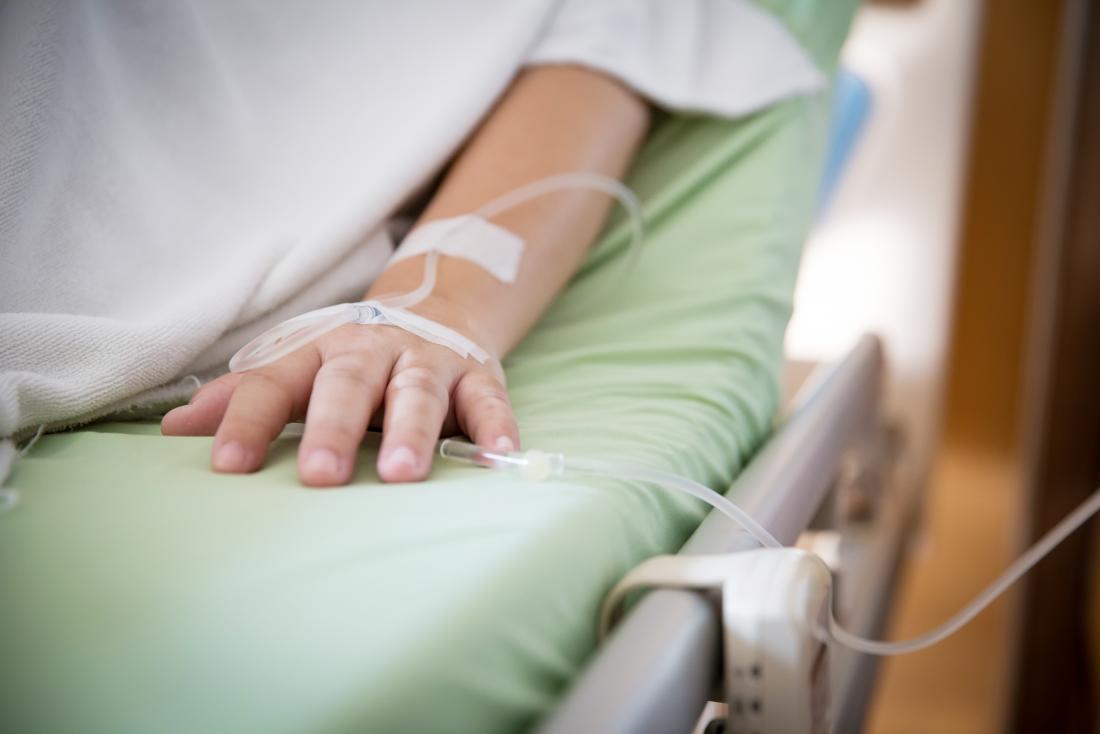According to research from 2015, about 53 percent of people with pancreatic cancer receive a diagnosis when the cancer is in stage 4. Treatment aims to prolong life and manage pain and other symptoms.
In this article, we describe the symptoms of pancreatic cancer and outline the treatment options when the cancer is in stage 4.
What is stage 4 pancreatic cancer?

A doctor will aim to manage pain and prolong lifespan when treating stage 4 pancreatic cancer.
Stage 4 cancer has spread to other parts of the body, possibly including the:
- bowel
- liver
- lungs
- spleen
- stomach
At this stage, a tumor may be any size. Sometimes, doctors can only identify the stage of cancer after performing surgery.
Stages describe the extent of the cancer’s spread. For example, in stage 1, pancreatic cancer is only present in the pancreas. In stages 2 and 3, the cancer has spread to nearby lymph nodes. In stage 3, it may also have reached the blood vessels.
The tumor’s size also helps determine the stage of the cancer. In stage 1 pancreatic cancer, a tumor typically measures 2–4 centimeters (cm).
If the tumor is larger, or if it has spread to as many as three lymph nodes, the cancer is in stage 2. In later stages, the tumor may be any size.
Stage 4 pancreatic cancer has spread to other organs. This means that surgeons cannot remove it, and there is no cure. Treatment involves managing pain and other symptoms to improve a person’s quality of life.
Symptoms
Pancreatic cancer does not typically cause symptoms in its early stages.
When the disease is in a more advanced stage, a person may experience:
- pain in the upper abdomen
- pain that radiates to the back
- depression
- fatigue
- jaundice, which is yellowing of the skin and the whites of the eyes
- a loss of appetite
- newly diagnosed diabetes
- weight loss
Treatment options
While there is no cure for stage 4 pancreatic cancer, treatments can help people manage their symptoms and improve their quality of life. Options include:
Chemotherapy

Chemotherapy is available in either oral or intravenous form
Chemotherapy is usually the first-line treatment for stage 4 pancreatic cancer. It involves using targeted medications to kill cancer cells. The goal is to increase a person’s lifespan.
A doctor administers chemotherapy, and the drugs may be oral or intravenous. They can kill cancer cells in the pancreas and those that have spread to other organs.
To treat stage 4 pancreatic cancer, doctors typically use gemcitabine (Gemzar), either alone or in combination with other medications.
Chemoradiation therapy
The medical team may recommend a combination of chemotherapy and radiation therapy, called chemoradiation, for stage 4 pancreatic cancer.
However, chemoradiation generally only treats cancer that has spread to organs near the pancreas, not more distant organs, such as the lungs or liver.
Radiation therapy can also help shrink tumors before or after surgery.
Palliative surgery
While surgery cannot cure stage 4 pancreatic cancer, certain procedures can alleviate symptoms. Examples of palliative surgeries include:
Bile duct stent or bypass
When a tumor blocks a bile duct, a surgeon may use one of these methods to help restore the flow of bile.
Bile breaks down fats in the digestive system, and when something blocks a bile duct, the bile builds up. This can lead to jaundice and a loss of appetite.
A bile duct bypass involves the surgeon connecting the duct to the small intestine so that the bile can flow around the blockage.
Or, the surgeon may insert a small tube, a stent, into the duct to keep it open and prevent a build-up of bile. A surgeon may eventually need to replace the stent if the tumor grows and blocks it.
Gastric bypass surgery
A tumor can prevent food from passing through the stomach and into the intestine. Doctors call this a gastric outlet obstruction.
To avoid the blockage, a surgeon can often connect the stomach to the intestine in a different way.
Medications
Stage 4 cancerous tumors can cause pain and discomfort. A doctor may prescribe pain relief medications, such as opioid analgesics and drugs that block signals to the nerves.
To help a person cope with the emotional impact of a terminal cancer diagnosis, a doctor may also recommend:
Emotional support

Emotional support from loved ones can help when dealing with a cancer diagnosis.
Receiving a diagnosis of stage 4 cancer can be distressing and overwhelming. People may experience:
- a range of emotions, including anger, fear, and grief
- anxiety
- depression
- sleeping difficulties
Finding emotional support can help. Some people benefit from:
- talking with loved ones
- building a support network involving friends and family
- seeing a therapist to work through emotions and gain coping skills
- learning about pancreatic cancer and a stage 4 diagnosis
- practicing relaxation techniques, such as meditation, creative therapies, and yoga
- exercising, under a doctor’s guidance
- discussing medical treatment options with one or more doctors
- connecting with other people who have cancer through local support groups and events
- accessing support and advice from the National Cancer Institute and the Pancreatic Cancer Action Network
Survival rates
According to the American Cancer Society, the 5-year survival rate for people with stage 4 pancreatic cancer is approximately 1 percent. This means that 1 out of every 100 people with this type of cancer are still alive 5 years after their diagnosis.
Any survival rate is an estimate. Some other researchers place the 5-year survival rate at 2 percent or 3 percent.
The outlook for a person with cancer depends on many factors specific to the individual. A doctor can take all these factors into account and make informed recommendations.
Takeaway
Stage 4 pancreatic cancer is incurable. While the median survival rate is around 3–6 months after diagnosis, some people live longer than this. Many individual factors, including age and general health, play a role in a person’s outlook.
Treatments can help people improve their quality of life and life expectancy. Many benefit from help and support provided by loved ones, healthcare professionals, cancer organizations, and local or national support groups.
